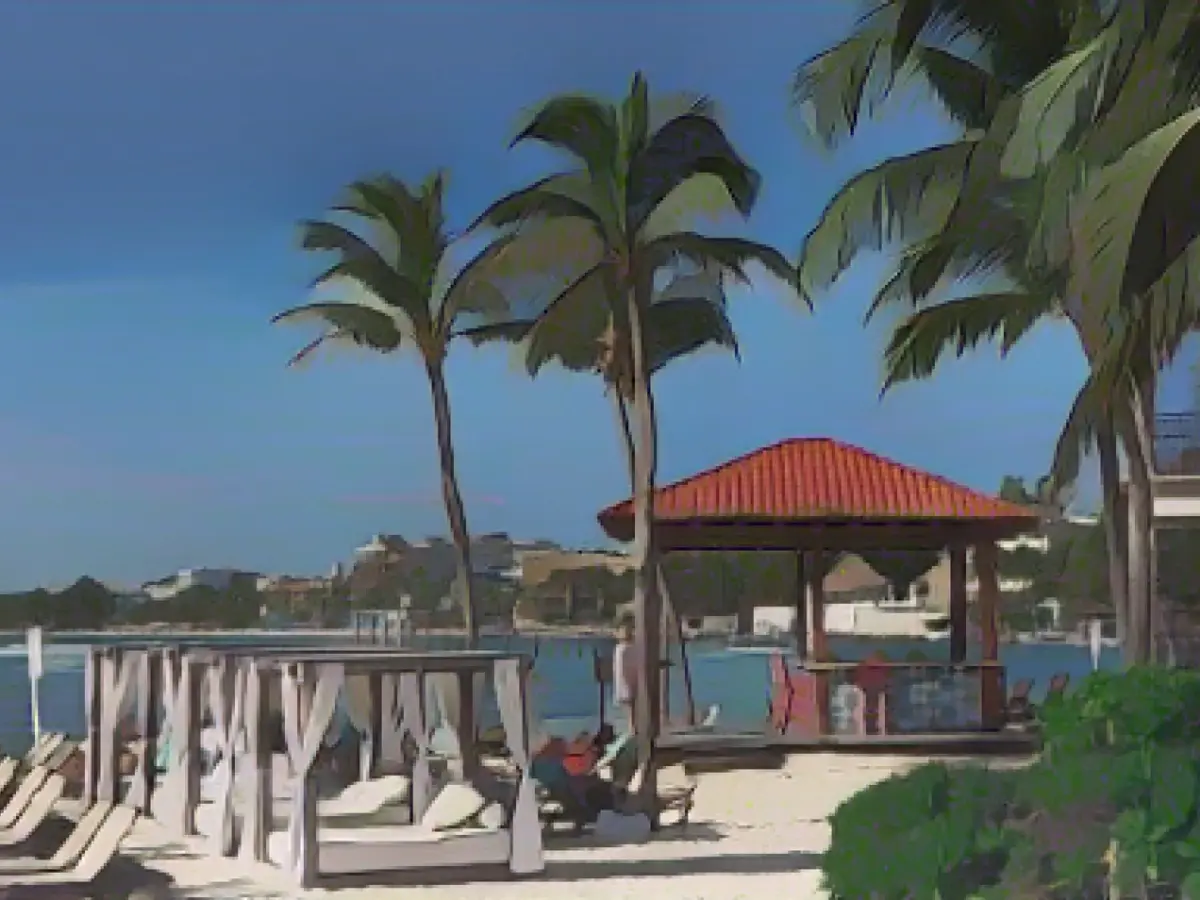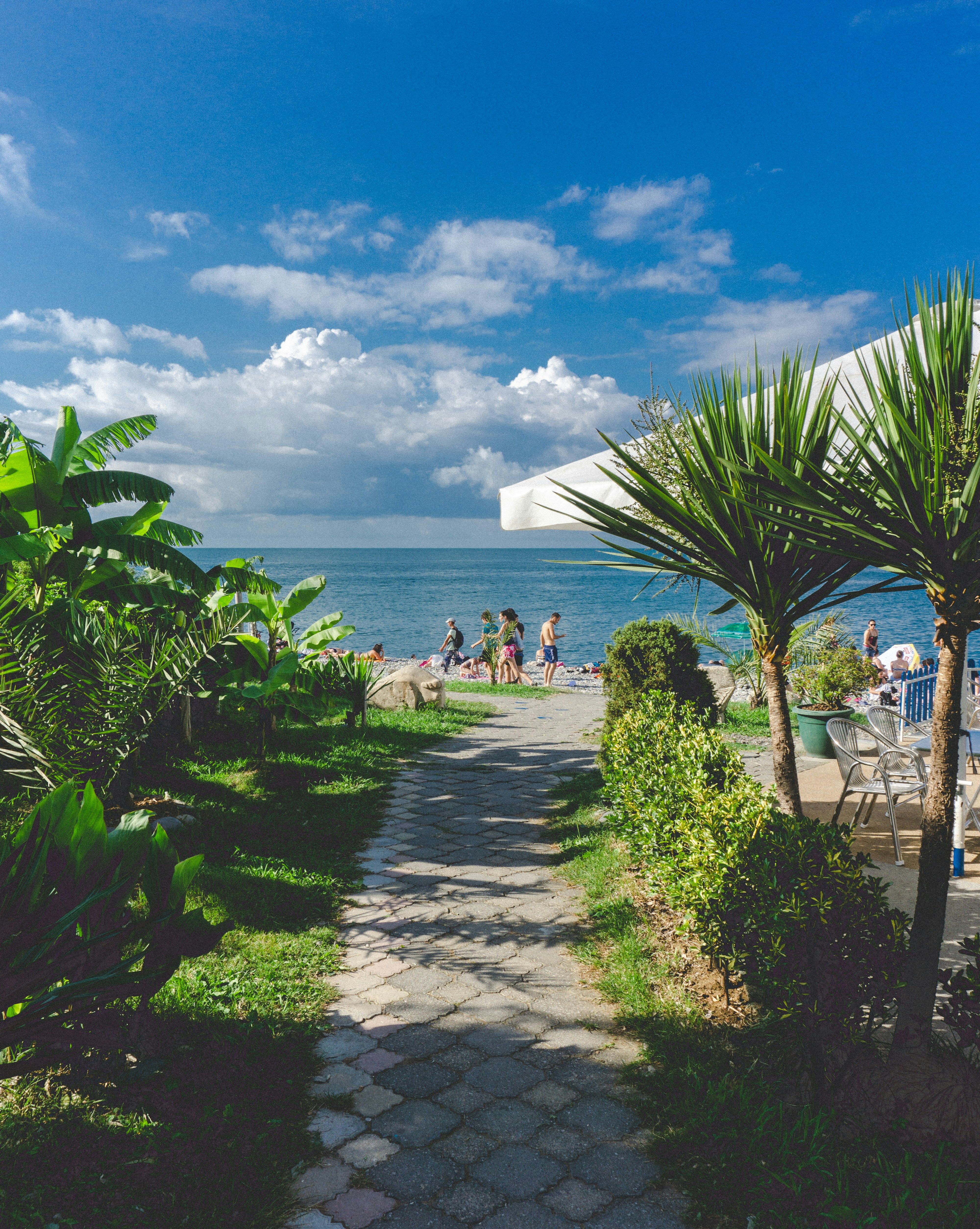In the heart of Mexico's Yucatán Peninsula, speleologist Roberto Rojo gazes upon a scene that leaves him dismayed. A vast, barren scar cuts its way through the dense jungle, marking the location of a deforested swathe that will soon serve as a path for the Mayan train. Thousands of towering construction pillars puncture the ground every 15 meters, preparing for a tourist railroad that promises to bring economic and social development, but at what cost?
After nearly four years of relentless construction, President Andrés Manuel López Obrador unveils the first piece of the 1,554-kilometer rail network. Dubbed the "Tren Maya," this colossal transit system aims to transport millions of tourists across the picturesque Yucatán Peninsula, unveiling hidden mayan metropolises and ancient ruins.
Riding the Wave of Progress
However, as development marches forward, Rojo can't help but feel the sting of environmental destruction. With the aquifer beneath the rainforest serving as the lifeline for the surrounding plants, animals, and humans, the train's presence threatens an irreversible rupture to the region's delicate ecosystem.
From its inception, the Mayan Train's journey will begin in the bustling coastal city of Cancún, eventually tracing its route along a retired railroad line before linking up with a bevy of newly constructed segments. By late February, the completed network should consist of 34 station stops across five states, including the most contentious sections such as the limestone karst formations and dense rainforests.
A New World Rising
Elias Siebenborn, a travel guide and long-time resident of the region, shares in Rojo's concerns. Donning a GPS device and piloting his drone, Siebenborn documents the route of the railroad, demonstrating the breathtaking dissection of nature through a series of stark reminders of the project's devastating impact.
Germany's Siebenborn has cataloged over 121 caves along the path between Playa del Carmen and Tulum - each as unique and tucked away as a modern-day Shangri-La. Unfortunately, the once untouched sanctuaries now lie at the mercy of progress.
The Selva Maya
With a breadth that rivals the Amazon's rainforest, the Selva Maya stands as the largest rainforest area in all of the Americas. A thriving ecosystem of diverse flora and fauna, this sprawling region once bore witness to the rise and fall of the mighty Mayan civilization. As it endures the onslaught of the Mayan Train, the world's eyes remain fixed on this ancient treasure trove.
As the railroad snakes its way along the coast, it aims to connect various Mayan ruins and historical sites, allowing visitors to journey back in time at breakneck speeds up to 160 kilometers per hour. Building a bridge between the past and the present, the Mayan Train serves as both a testament to the region's storied history and an omnipresent reminder of the convenient undermining of that heritage.
A Tug-of-War Between Progress and Conservation
Manuel Andrew, a hotel porter in Cancún, weighs the pros and cons. In his eyes, the Mayan Train embodies the chance to breathe new life into Communities that had once succumbed to isolation, potentially sparking economic growth and opening new avenues for local artisans and hotel workers.
However, the project's critics argue that the deployment of the armed forces to oversee construction, combined with a tripling of the cost from 150 billion to 500 billion pesos (approximately 27 billion euros), comes at too steep a price. The torrential destruction left in the wake of the Mayan Train's progress evokes doubts about the project's long-term sustainability, impacts on the ecosystem, and abridgements of private property.
The Military's Movement forward
When the clamor for environmental protection grew to a crescendo, the president declared the Mayan Train "a matter of national security," temporary silencing those who dared question the president's motives. With the project now under the direct auspices of the military, opponents worry that the development of industrial parks and a beefed-up tourism sector may come at the expense of the rich, storied history preserved within the Selva Maya.
In the heart of the economically thriving Yucatán, the city of Mérida drummed up enthusiasm for the Mayan Train by plunging into a city-wide development initiative. From the refurbishing of city streets and facade paints to the construction of gastronomical corridors, the city aiming to establish itself as a new border between Mexico and the United States – at least from an economic perspective.
The self-proclaimed economic plan of López Obrador's government stirs intense controversy among activists and the public. Environmentalists fear that the environmental and heritage sacrifices will never be worth the temporary economic benefits. The fatigue of environmental destruction, dispossession of territories, and disruption of heritage sites plague critics as the Mayan Train barrels forward.
Lost Paradises and Forgotten Treasures
In the end, activist Roberto Rojo insists that the richness of nature, history, and culture needs to remain intact if the region wishes to maintain its allure and draw visitors from around the world. If nature is hollowed out, Rojo cautions, the Mayan train and the tourism it endeavors to cultivate will fade into obscurity, leaving behind only desolation and the disheartening echoes of a once-great civilization.





